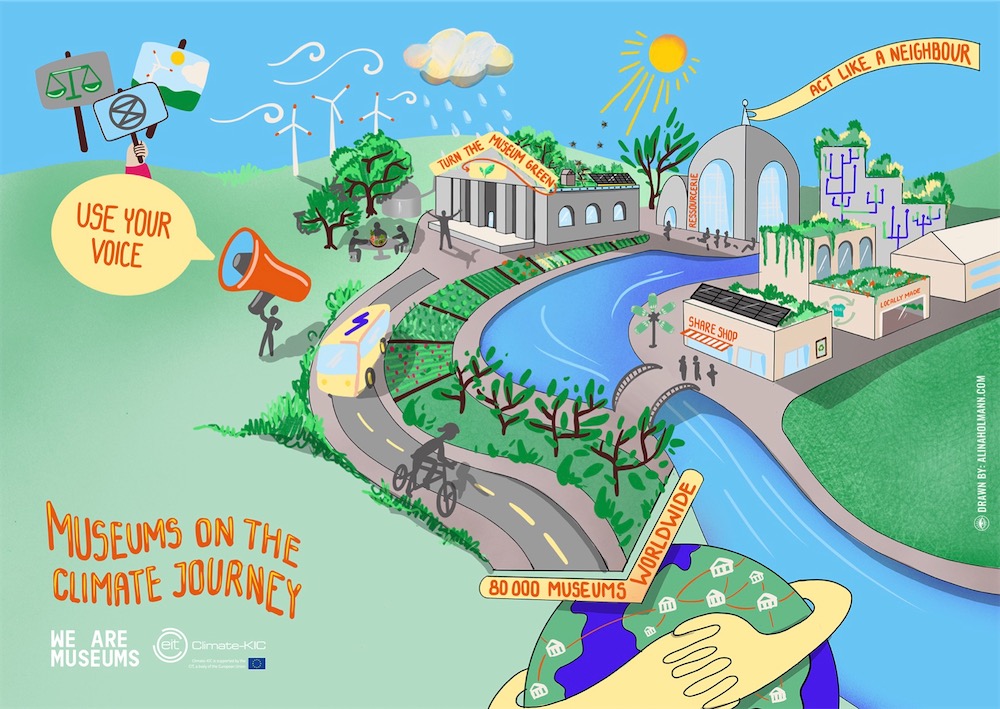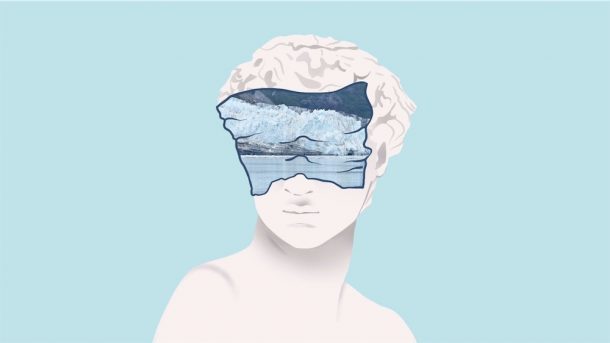The V&A Anthropocene Reading Group is a cross-departmental staff discussion forum dedicated to critical thinking around the Anthropocene – our present age in which human activity has become the dominant force shaping the climate and ecosystems of planet Earth. We are focused on the importance of bringing together the arts, sciences, social sciences and humanities in this time of climate and biodiversity crisis, exploring how the concepts and theoretical frameworks of the Anthropocene relate to museum practice at the V&A. In 2021 we are turning our attention to systems change, and engaging with critical and propositional practice that is shifting the landscape of debate and action in response to the realities of the Anthropocene, from economics to fashion, architecture, design and making.
Our first guest speaker of 2021 was Diane Drubay, founder of We Are Museums, museum mentor, event curator, community builder and artist. A thought-provoking session, the discussion explored several concepts and ideas.
How nature can inspire work in museums
Starting with the idea of Nature being seen as our main mentor – after all it has had 3.8 billion years of research and development – Diane introduced the concept of biomimicry. This is the practice of learning from, and mimicking, the systems found in Nature and can be applied to social activity to help museums to innovate. This was the focus of a research project with the Biomimicry Academy in Berlin in 2019/20. Diane said, ‘We took the model of the ecosystem of a forest to guide us in the understanding of new social ecosystems. The main goal of this research programme was to find out how museums, like trees in a forest, could create symbiotic relationships with their neighbours and communities. We termed this interconnected system ‘museumhood’.” Being able to understand one’s ecosystem and its biodiversity is all about our capacity to adapt to changing conditions and staying locally attuned – while also celebrating one’s individuality and core features.

Permeable museums
A complementary concept, that of permeability, particularly resonated with the Reading Group. In Nature, permeability has the function of allowing fluids to infiltrate, but also distributing them while regulating their speed. This principle of permeability can inspire museums to become porous multicultural, multifunctional ecosystems. A museum should allow people in to explore and shape narratives, without losing its purpose and identity (a ‘functional infiltration’ capacity). Building on this, perhaps is there a new operative definition needed for museums? Diane was inspired by the words of Julie Rokkjær Birch, director of the Gender Museum in Denmark, who described her museum as an organism, not an organisation. Here each employee is a cell working on different projects and making things happen, together. Cooperation, mutual benefit and symbiosis shape how Nature nurtures diversity – multiple interactions allow mutual morphosis and evolution.
Responding to the climate crisis
But what does this mean for climate action? Museums, as part of an 80,000 strong worldwide network can operate as a global movement working for systemic change. The challenge is twofold: how can they facilitate transformations for our societies while embodying this vast network of possibilities at the personal, individual, institutional and systemic level? For Diane, this has been the focus of her work at We Are Museums, where they have been developing a visual road map called Museums on the Climate Journey along with open access toolkits and resources for the sector. Systemic change starts with step-by-step adjustments. But those steps should be directed towards transformations of the fundamental features and principles of the system. In the museum world, we have started to build an understanding of the potential we have to engage our audiences in understanding an acting on climate change.

Complex systems
In our discussion, we reflected on the challenges and limits of ecosystem thinking, from the varying political contexts of museums around the world, to the responsibility of the museum towards its employees. If we think of the museum as an ecosystem, we must remember that it is a complex system. Policy, politics, economic structures, activism, funders and investors, visitors and employees are all part of it. The complexity of the museum as a system also necessitates new forms of capturing ideas, to ensure that feedback and ideas for change don’t get lost. A recent project with EIT Climate-KIC, Museums Facing Extinction, focused on turning 16 museums in Lithuania into agents of change. They looked at climate action via new museum practices, local community engagement programmes and exhibitions. It was inspiring to hear about how such initiatives can help to create a space to start driving change in complex systems, and to think about how we do this at the V&A.

The Anthropocene Reading Group is cross-departmental effort, convened by V&A East, VARI and the Estate department. It is co-chaired by Marta Ajmar, Sara Kassam and Zofia Trafas White



Thanks for sharing these insights into a refreshing approach on this issue. I’d like to know more about how you’re sharing good practice and ideas with closest museum neighbours. Whilst I realise that organisational shift takes time, I hope practical changes will grow soon on how V&A manages its estate and produces exhibitions. There’s also the thorny issue of ethical funding, including pension investments…